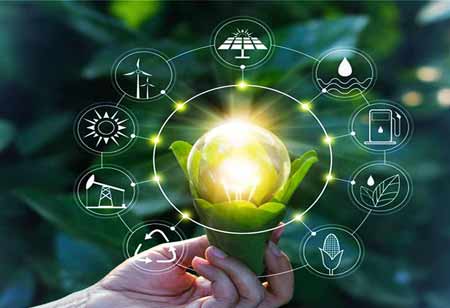Thank you for Subscribing to Energy Business Review Weekly Brief
Driving the Future of Battery Technologies
A battery is a collection of one or more cells, each of which has an electrolyte, a separator, a positive electrode (the cathode), and a negative electrode (the anode).

By
Energy Business Review | Friday, February 10, 2023
Stay ahead of the industry with exclusive feature stories on the top companies, expert insights and the latest news delivered straight to your inbox. Subscribe today.
Innovation in new battery technology is occurring quickly. Modern new batteries are being created, and some are even available. The most recent generation of grid-size storage batteries is more efficient, has a bigger capacity, and lasts longer.
FREMONT, CA: A battery is a collection of one or more cells, each of which has an electrolyte, a separator, a positive electrode (the cathode), and a negative electrode (the anode). The qualities of the battery, such as how much energy it can store and output, how much power it can give, or how many times it can be drained and recharged, are affected by using different chemicals and materials for these.
Lithium-Sulphur Batteries
The lithium ions are stored in active materials acting as stable host structures during charge and discharge in li-ion batteries but there are no host structures in lithium-sulfur (Li-S). The lithium anode is consumed during discharging, while sulphur is converted into a number of different chemical compounds during charging. In a Li-S battery, the positive electrode is made of sulphur, and the negative electrode is made of metallic lithium. This explains why it has a theoretical energy density that is four times higher than lithium-ion. As a result, the aerospace and space sectors can benefit from it.
The most promising Li-S technology based on solid-state electrolytes has been chosen and favoured by Saft. This technological route eliminates the primary limitations of the liquid-based Li-S (limited life, rapid self-discharge, etc.) and provides extremely high energy density and extended life. Due to its better gravimetric energy density (+30% at risk in Wh/kg), this technology is also an alternative to solid-state lithium-ion.
New Generation Lithium-Ion Batteries
By the movement of lithium ions from the positive to the negative electrode back and forth through the electrolyte, energy storage and release are provided in lithium-ion batteries. The positive electrode serves as the initial source of lithium in this technique, and the negative electrode serves as the host for lithium. Li-ion batteries are the collective name for a variety of chemistries developed over many years of examination and near-perfection optimisation of positive and negative active elements. The most typical materials utilised as present positive materials are lithiated metal oxides or phosphates. Graphite is used as a negative material, as well as graphite/silicon and lithiated titanium oxides.
In the coming years, li-ion technology is expected to reach an energy limit with actual materials and cell designs. However, relatively recent discoveries of new families of disruptive active materials should unlock present limits. The first time that energy and power can be combined will be made possible by these creative compounds, which can store more lithium in positive and negative electrodes. Additionally, the dearth and importance of raw materials are taken into consideration with these new compounds.
Currently, Li-ion battery technology allows the highest level of energy density among all the state-of-the-art storage technologies. By the large choice of cell design and chemistries, fast charge or temperature operating windows can be fine-tuned. Li-ion batteries have significant advantages such as very low self-discharge and very long lifetime and cycling performances, with thousands of charging/discharging cycles typically.
Solid State Batteries
A solid compound which allows lithium ions to migrate within it replaces the liquid electrolyte in all-solid-state batteries. In terms of technology solid-state batteries represent a paradigm shift. Ions move from one electrode to another across the liquid electrolyte in modern li-ion batteries. Over the past ten years, new families of solid electrolytes with very high ionic conductivity, similar to liquid electrolytes, have been discovered, allowing this particular technological barrier to be overcome.
The first significant benefit is a marked improvement in cell and battery safety: solid electrolytes, unlike liquid electrolytes, are non-flammable when heated. Second, it enables the use of novel, high-voltage, high-capacity materials, resulting in denser, lighter batteries with longer shelf lives due to reduced self-discharge. Besides, it will provide further advantages at the system level, such as simplified mechanics as well as thermal and safety management. The batteries may be perfect for use in electric cars because they have a high power-to-weight ratio.






